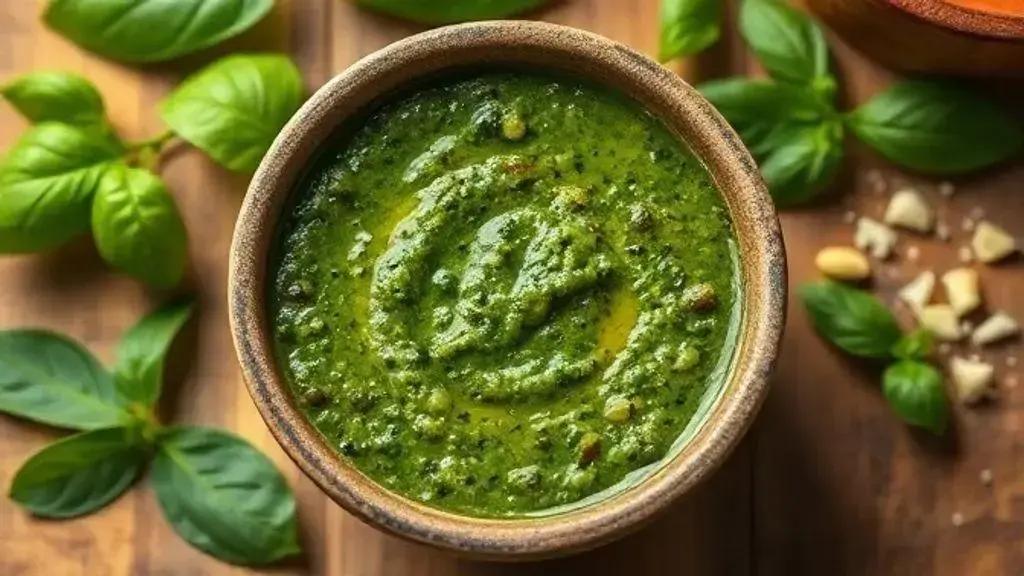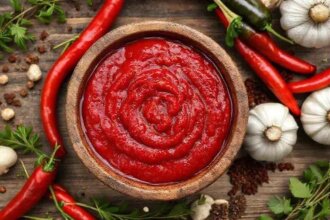
pesto sauce
Pesto sauce is vibrant and easy. Learn how to make classic Italian pesto at home with few ingredients and incredible flavor!
Ingredients
Method
- Begin by washing and thoroughly drying the basil leaves. Excess moisture can affect the texture of your pesto.
- In a food processor, add the basil leaves, pine nuts, and garlic. Pulse several times until the mixture is finely chopped, but not a paste.
- Add parmesan and pulse a few more times to combine.
- With the processor running on low, slowly drizzle in the olive oil until the mixture is smooth and emulsified. Stop to scrape down the sides as needed.
- Add lemon juice, salt, and freshly ground pepper. Pulse a final time just to incorporate and taste. Adjust seasonings if necessary.
- Transfer your pesto sauce to a bowl or jar. Store in the refrigerator, topping with a thin layer of olive oil to preserve freshness.
- Serve with pasta, bread, grilled vegetables, or as desired. Enjoy your fresh homemade pesto sauce!
Notes
Few sauces are as universally loved and adaptable as pesto sauce. Whether tossed with piping hot pasta, used as a sandwich spread, or dripped over roasted veggies, its vivid color and robust aroma brighten any meal. Make a fresh batch at home, and you’ll never look at store-bought pesto the same way!
Pro Tips for Flawless Pesto
- Choose basil at its freshest: The brighter and firmer the leaves, the more vibrant your pesto. If basil is unavailable, try arugula, spinach, or parsley for a unique twist.
- Pine nut alternatives: Cashews, walnuts, or almonds make delicious and more affordable substitutes. Lightly toast them first for a deeper flavor.
- Smooth, not runny: Add olive oil gradually until the sauce comes together. Too much oil at once can make the sauce separate.
- Garlic moderation: For a milder flavor, briefly sauté garlic in olive oil before blending. This mellows its intensity and rounds out the pesto’s profile.
Masterful Preparation Advice
Use a food processor for convenience, but if you have time and want a rustic texture, try making pesto with a mortar and pestle. This technique releases basil’s essential oils and produces a more aromatic sauce. Also, avoid over-processing; stopping at a coarse texture is key—you’ll taste the basil’s freshness more distinctly. If your pesto starts to darken after storage, just stir in a little more lemon juice. It helps preserve the color and adds brightness.Serving Suggestions and Variations
- Mix into cooked pasta with a splash of reserved pasta water for a glossy, well-coated dish.
- Spread onto toasted baguette slices and top with cherry tomatoes or grilled veggies for a quick appetizer.
- Drizzle over grilled chicken or salmon for a fresh herbal punch.
- For dairy-free pesto, replace parmesan with nutritional yeast and add a few extra pine nuts.
- Experiment with different herbs—try half basil, half mint for summer salads.





